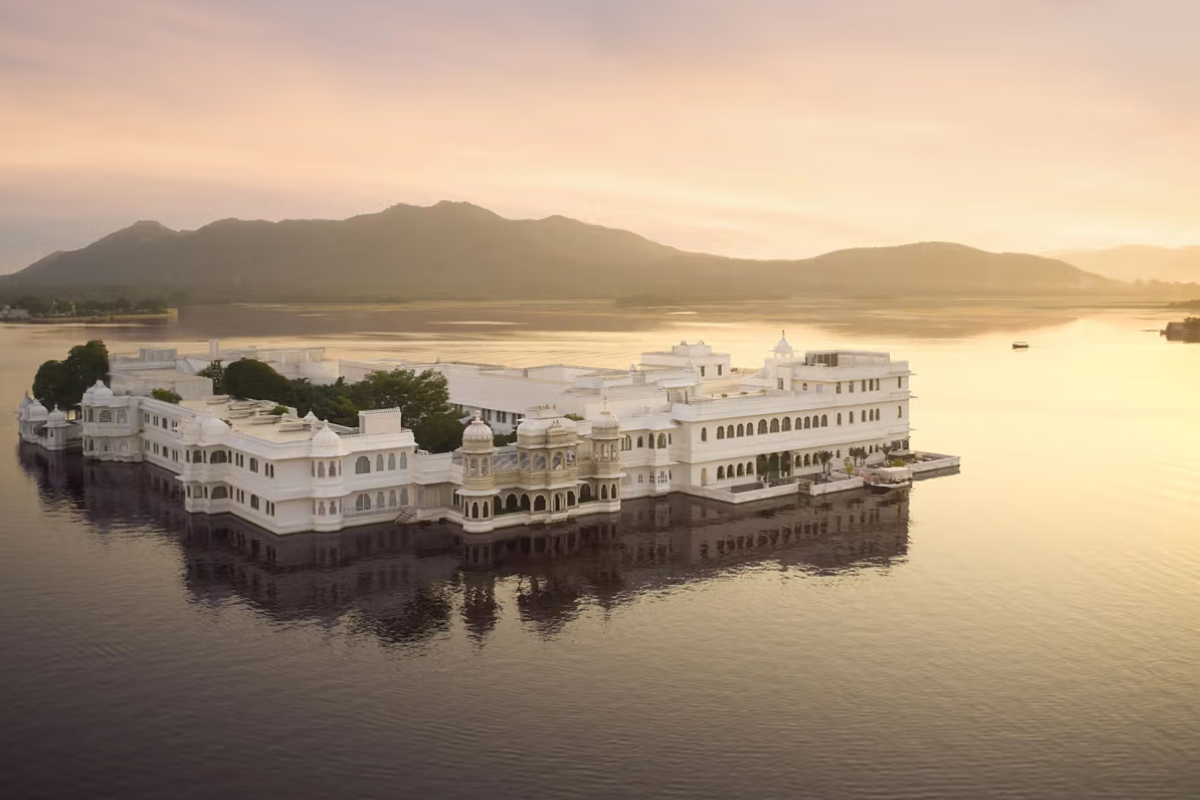Inside the Taj Lake Palace: Udaipur’s Iconic Floating Hotel
Imagine rose petals shower over you.
You look up, and an escort of royal guards marches towards you, putting a grand traditional umbrella over your head.
That’s the welcome you receive when you step off your teetering boat and onto the marble floor of the Taj Lake Palace in Udaipur.
The moment you turn your gaze around, you are transported to a world of another time.
Another place.
Another style of living.
Floating in the middle of Lake Pichola, this white palace has so many stories hidden behind its door.
One of them is of Maharana Bhagwat Singh Mewar, the man behind the white palace that shimmers like a mirage.
A Royal Beginning
It all began in 1960.
One fine day, Maharana Bhagwat Singh Mewar stood at the edge of Lake Pichola.
He was deep in thought, gazing at the Jag Niwas, a palace built by his ancestor, Maharana Jagat Singh II, in the 18th century.
Though, all he could see was an abandoned palace.
The beautiful marble had faded under the weight of time and neglect.
His family’s legacy, which once couldn’t be spelled without royalty and valor, was now crumbling at the hands of time.
Maharana Bhagwat Singh Mewar realized that he needed to preserve the palace.
He wanted it to showcase the beauty of the place to the entire world.
So, when the wave of tourism knocked at the doors of India, Maharana Bhagwat Singh Mewar was the first to open his doors with a warm welcome.
Then began the journey of Jag Niwas to become the splendor of Rajasthan’s royal past: the Taj Lake Palace.
A Vision Against the Odds
When Maharana Bhagwat Singh Mewar made the decision to restore Jag Niwas, he knew the path ahead was not an easy one.
After all, restoring a palace this massive was no small feat.
Even Maharana Bhagwat Singh Mewar faced his share of challenges.
His biggest obstacle?
The palace sat on an island right in the middle of Lake Pichola.
All the materials needed for restoration were to be ferried across the lake.
Yet, Maharana Bhagwat Singh Mewar was determined.
Many skilled artisans were brought together, handling the intricate carvings and marble inlays with care.
Every wall, every room, and every corner of the palace told a story.
That day, a vision came to life:
People could step into history while experiencing the finest in modern hospitality.
The Big Why: Preserving Heritage, Sharing Legacy
To Maharana Bhagwat Singh Mewar, restoring the Taj Lake Palace was not about creating a commercial venture.
His journey was one of creating a bridge between the past and the present.
To let countless visitors stand at the doorstep of the palace and be ready for a once-in-a-lifetime experience of experiencing the royal lifestyle of Rajasthan.
To share the cultural richness and historical significance of the Mewar dynasty with the world.
The Grand Opening
It wasn’t until 1971 that the Taj Lake Palace first opened its doors to visitors.
When the first-ever visitors walked inside the property, the palace became a legend.
They immersed themselves in the luxurious beauty of the palace and experienced the most impeccable service.
The Enduring Legacy
When you visit the Taj Lake Palace, you also visit the countless stories that once lived in the walls, the rooms, and the corridors.
Today, the property is not just a luxurious hotel.
It’s a living, breathing fruit of Maharana Bhagwat Singh’s vision.
The symbol of Rajasthan’s royal past.
A window to the spectacular tales of the Mewar dynasty.
I first came across this palace online — a vision in white floating on a shimmering lake.
At first, it was the elegance that drew me in.
But the more I read, the more I felt its soul. This palace is a reminder that legacies aren’t just built on ambition — they’re built on courage, vision, and the will to preserve what matters.
I hope the journey of Jag Niwas to Taj Lake Palace moves you as much as it moved me.
I recently recorded a video about this one, you can watch it here.



